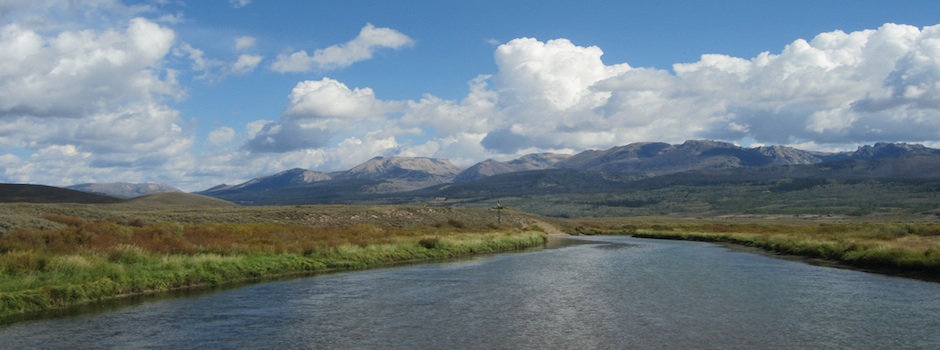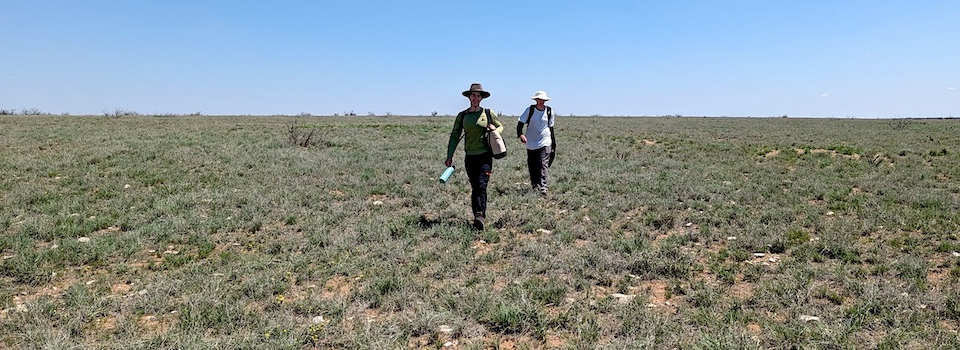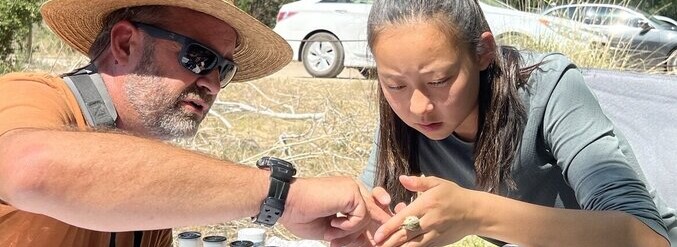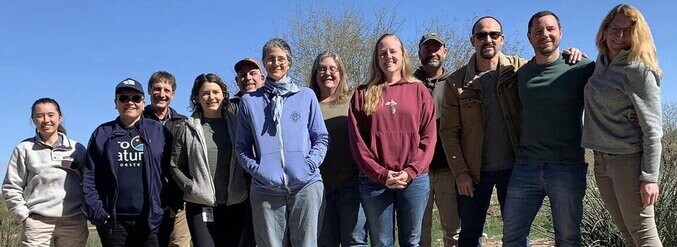From a hilltop vantage, members of the IWJV’s Management Board and State Conservation Partnership looked across the North Cottonwood Ranch near Daniel, Wyoming. For nearly as far as the eye can see, the group was witnessing over 15,000 acres of vital wetlands and uplands protected in perpetuity.
The North Cottonwood Ranch conservation easement is one part of a colossal voluntary landscape-scale effort to conserve the Upper Green River watershed. Organizations from across the state and region are prioritizing the area due to its expansive and intact biological, ecological and cultural values. The sagebrush steppe in this watershed supports one of the highest density populations of greater sage grouse range-wide. The wetland values are equally remarkable and have the highest “Vulnerability” and “Rare Species Presence” scores of all wetland complexes identified in the state and it is one of IWJV’s 18 Wetland Focus Areas. Following the longest migration route in the lower 48, mule deer and pronghorn travel along historic corridors in the Upper Green watershed that have remained unbroken due in large part to traditional ranching.
Many conservation groups and landowners understand the value and intact nature of this large landscape but development is increasing in the scenic valley. The Upper Green River’s mountain vistas, recreational opportunities and mineral resources have driven land values up, making it that much more important to combine forces to bring about landscape conservation.
Click here to watch a video about the Upper Green River watershed!
Thankfully, a coalition is already in motion here, bringing conservation planning and funding tools to enact projects in the Upper Green. The IWJV’s State Conservation Partnership designated the Upper Green River as a Wetland Focal Area, because of its regional value for wetland-dependent birds and associated habitats. Approximately 92% of the Upper Green River Project Area is within Wyoming Game and Fish Department’s Habitat Priority Areas, which mean there is a need to protect or manage this area to maintain healthy populations of terrestrial and aquatic wildlife. The U.S. Fish and Wildlife Service Partners for Fish and Wildlife Program identified the Upper Green River as a Focus Area with specific goals to be achieved by 2016.
A North American Wetlands Conservation Act (NAWCA) grant has been funded in the Upper Green and Farm Bill funding is already been distributed to the area. The latter helped fund the North Cottonwood Ranch as the largest conservation easement in the Green River Valley. The Cottonwood Ranch easement is held by the Wyoming Stock Growers Agricultural Land Trust and it links eighteen other conservation easements, increasing habitat connectivity. This safeguards the owner’s ranching legacy and provides migratory and breeding habitat for waterfowl.
The key ingredient to successful conservation in the Upper Green has been the landowners that have been willing to adjust their ranching operations or enter into a conservation easement to benefit the wildlife values. Without these stakeholders, we couldn’t get anywhere, said Jennifer Hayward with the Natural Resources Conservation Service (NRCS). Landowners can go to lots of different partners to find what venue can help them achieve their goal, she said, and often it takes a village of organizations to get something big accomplished. *
“I don’t think there’s a one-stop shop to meet every landowner’s needs. In this day and age we have to rely on each organization’s expertise to fill in all the pieces that are needed to make a project come together,” Hayward said.
The combination of extensive private lands and sage steppe habitat interspersed with wetland complexes in the Upper Green make this region an ecological treasure and anomaly. Wyoming State Director of The Conservation Fund, Luke Lynch, described what might have happened to the North Cottonwood Ranch.
“This place could have been divided into 430 ranchettes,” Lynch said. “Instead, this easement conserves miles of creeks, which link high mountain forests to sagebrush and willow meadows, tying winter and summer habitats together for numerous species.”
Today, cattle still graze the North Cottonwood and wildlife still traverse it’s uplands and wetlands. Lynch said the Upper Green’s working lands are very compatible to wildlife needs in this area. What doesn’t work are hundreds of 35-acre home sites filling the valley bottoms and severing migration corridors.
This success story is only one example of how collaborations among multiple conservation groups advance landscape-scale conservation across an invaluable watershed. In addition to the NRCS and The Conservation Fund, the Wyoming Wildlife & Natural Resources Trust, National Fish & Wildlife Foundation, Wyoming Game and Fish Department, Fish and Wildlife Service, Partners for Fish and Wildlife, The Nature Conservancy, Ducks Unlimited, The Wyoming Stock Growers Agricultural Land Trust and many landowners have all contributed extensively to conservation in this valley.
* The Sage Grouse Initiative (SGI) is an example of the idea that it takes a village for landscape-scale conservation. The SGI Strategic Watershed Action Team (SWAT)—a project facilitated by SGI, the IWJV and Pheasants Forever—has created 24 partner positions across the sage grouse range to provide technical assistance. In the Upper Green, these positions have been instrumental Hayward said, in providing information to landowners. They dedicate the necessary time it takes to inventory, develop conservation and grazing plans, and communicate with landowners about their importance in the conservation of sage grouse.






